After millennia as carbon dioxide sink, more than one-third of Arctic-boreal region is now a source

Fire near Scotty Creek Research Station. Photo by Mason Dominico
Arctic Communications Strategist, Woodwell Climate Research Center
After millennia as a carbon deep-freezer for the planet, regional hotspots and increasingly frequent wildfires in the northern latitudes have nearly canceled out that critical storage capacity in the permafrost region, according to a new study published in Nature Climate Change.
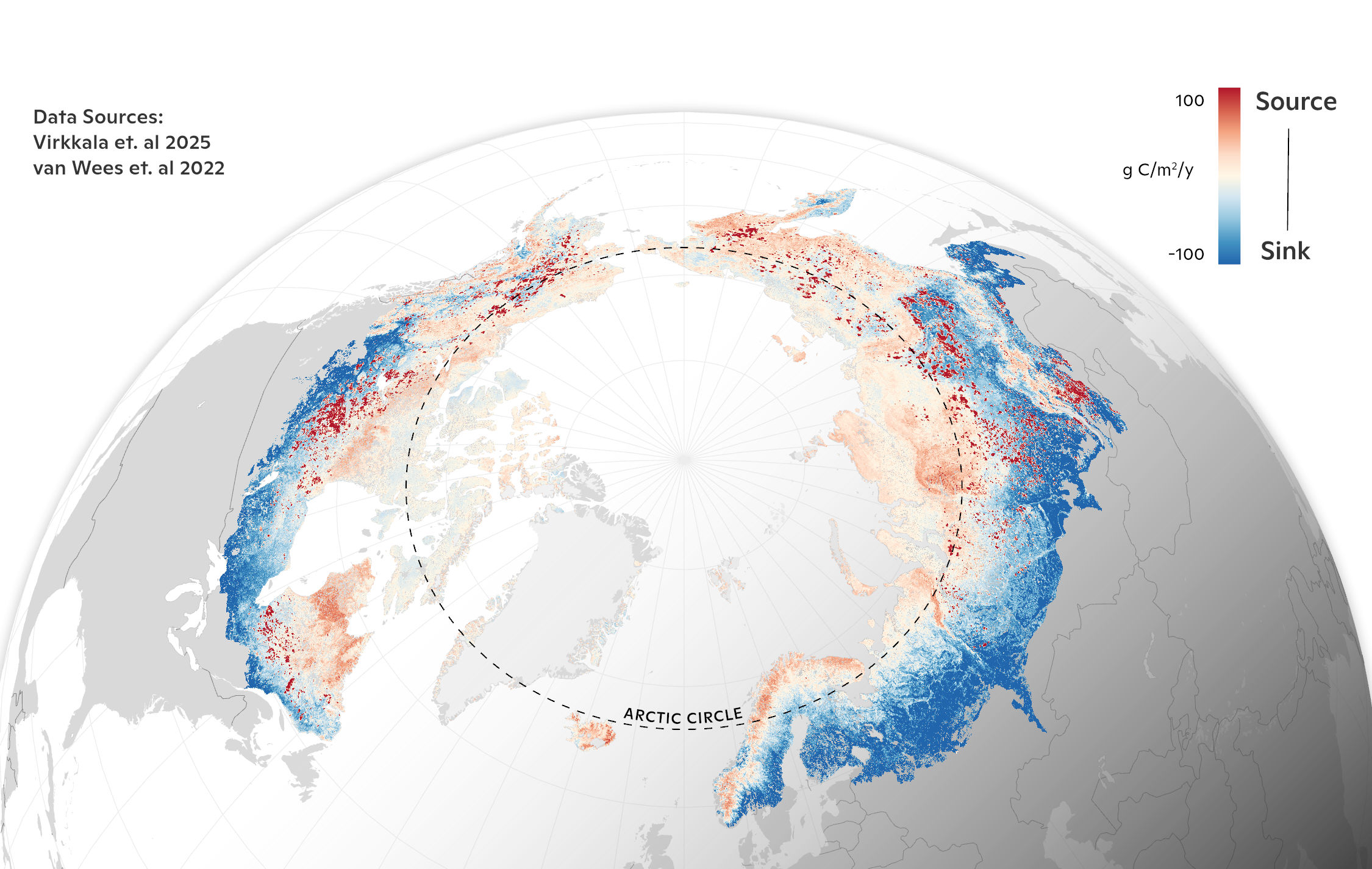
Average terrestrial CO2 balance during 2001-2020 based on a synthesis of field measurements and machine learning models.
Map by Greg Fiske / Woodwell Climate Research Center
An international team led by Woodwell Climate Research Center found that a third (34 %) of the Arctic-boreal zone (ABZ)—the treeless tundra, boreal forests, and wetlands that make up Earth’s northern latitudes—is now a source of carbon to the atmosphere. That balance sheet is made up of carbon dioxide (CO₂) uptake from plant photosynthesis and CO₂ released to the atmosphere through microbial and plant respiration.
When emissions from fire were added, the percentage grew to 40%.
The findings represent the most current and comprehensive assessment of carbon fluxes in the ABZ to date. Drawing on a library of CO₂ data four times as large as earlier upscaling efforts gathered from 200 study sites from 1990-2020, the analysis captures both year-round dynamics and important recent shifts in climate and northern fire regimes that have altered the carbon balance in the north.
Research site at Zackenberg Research Station in Greenland.
Photo by Efrén López-Blanco.
These data are stored and analyzed in a comprehensive and growing library dubbed “ABC Flux,” which Virkkala helms. ‘Upscaling’ refers to the process by which these individual site-level readings are knitted together with climate, soil, and vegetation records to produce living maps of Earth’s otherwise invisible exhalations and inhalations.
“We wanted to develop the most current and comprehensive picture of carbon in the north, and to do that, we knew we needed to account for fire’s growing carbon footprint in this region,” said Dr. Anna Virkkala, a research scientist at the Permafrost Pathways initiative at Woodwell Climate and lead author of the study. “While we found many northern ecosystems are still acting as carbon dioxide sinks, source regions and fires are now canceling out much of that net uptake and reversing long-standing trends.”
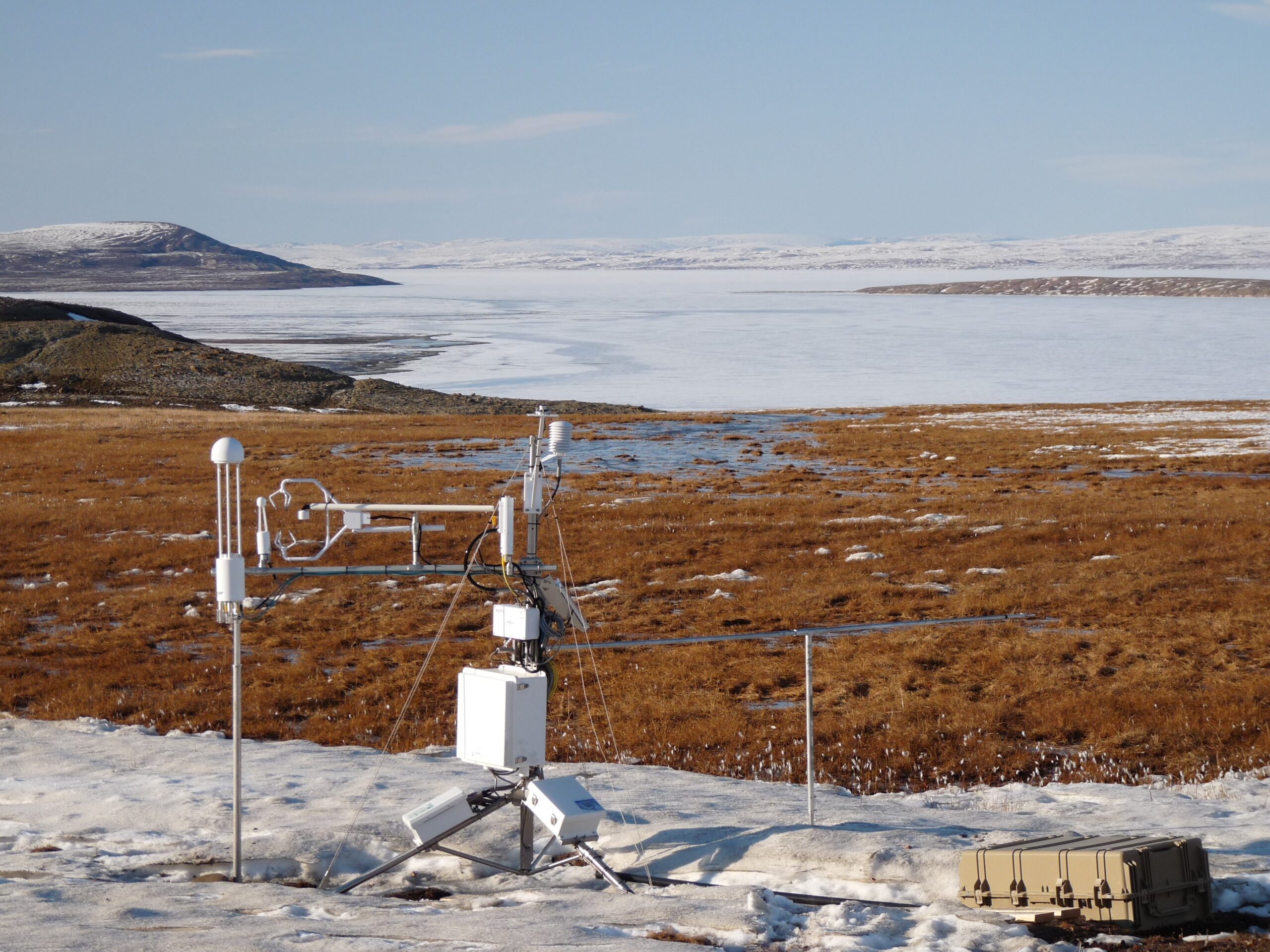
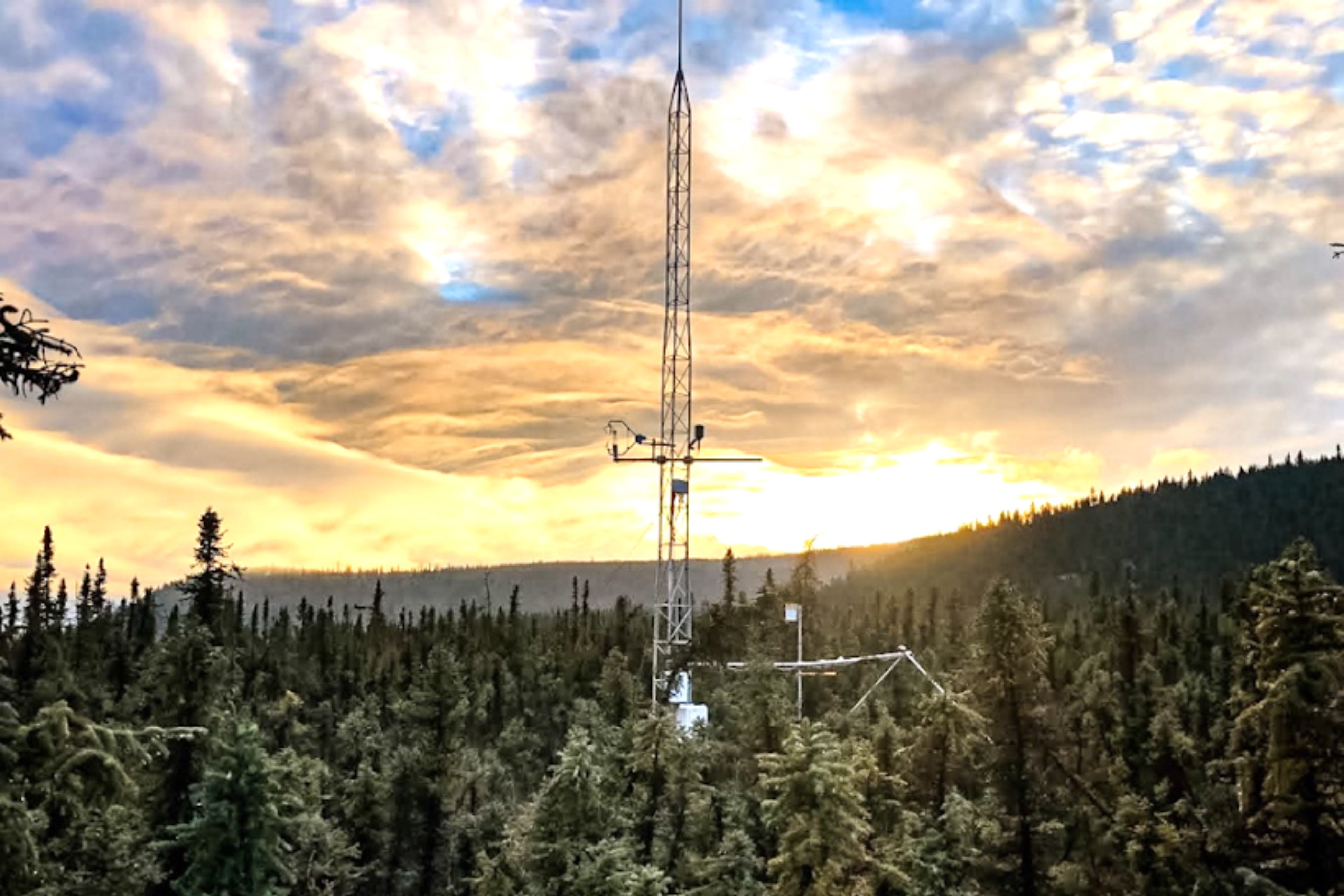
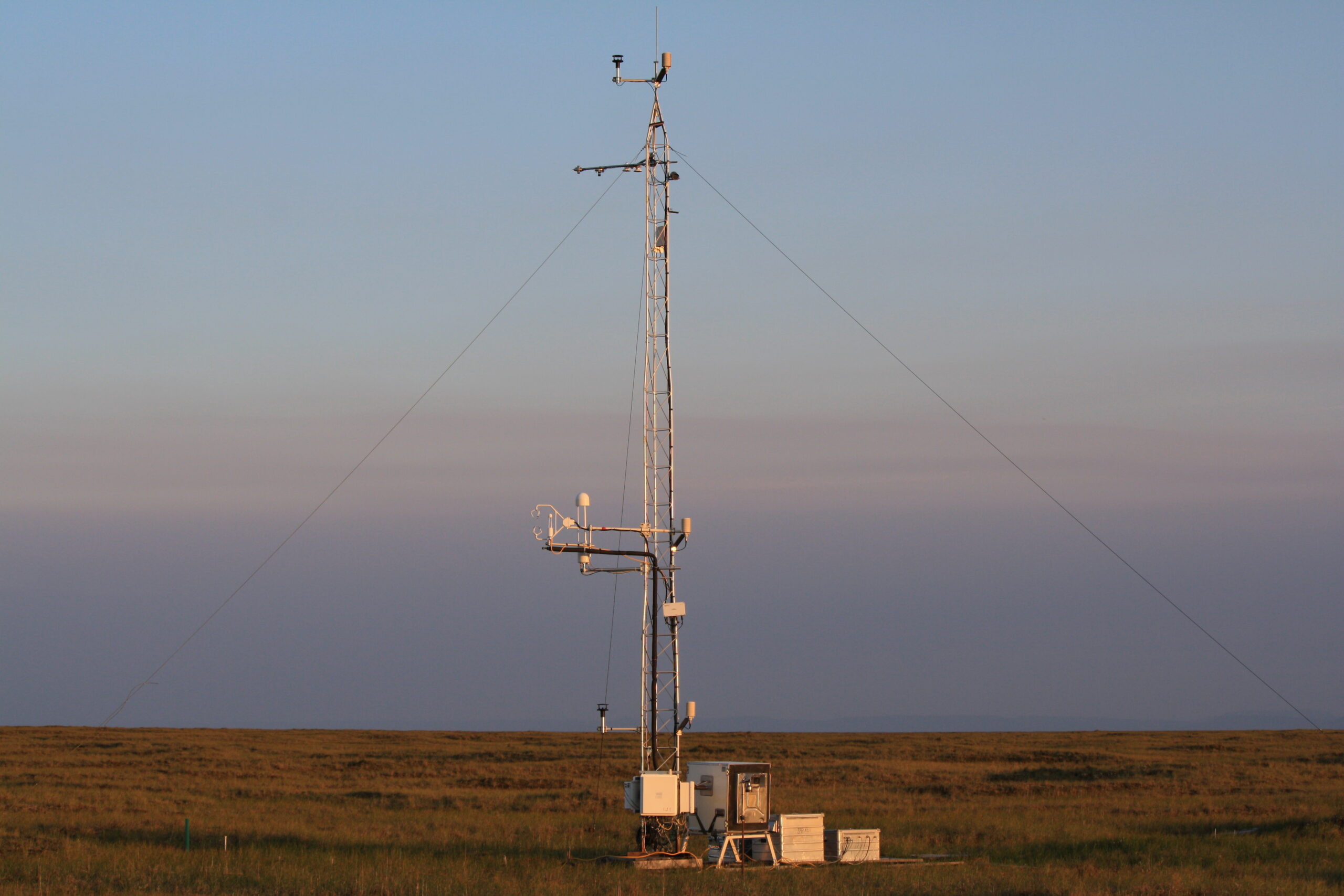
Research site in Lake Hazen, Canada (top) / photo by Craig Emmerton and Vincent St.Louis;
Research site in interior Alaska, United States (middle), photo by Jack McFarland;
Samoylov Island Research Station, Russia (bottom) / photo by Torsten Sachs.
The study is a robust record of how land in the northern latitudes is breathing—measuring the gasses it releases and pulls down from the atmosphere. Data are gathered at carbon flux monitoring towers and chambers, which track gas exchange between the land and the atmosphere.
By tracking monthly records over three decades, the Nature Climate Change study helps illustrate the “why” behind the trends: for instance, carbon uptake in the summers has increased over the 30 years, but more carbon emissions are being released from the tundra during the non-growing season months.
Another advantage this study offers is relatively high resolution—1km x 1km for 2001-2020—allowing the researchers to map the “where” shaping these trendlines.
Research site in Degerö -Stormyr, Sweden.
Photo by Matthias Peichl
“The high resolution of these data means that we can now see how variable the Arctic is when it comes to carbon,” said Dr. Sue Natali, a co-author on the study and lead of Permafrost Pathways at Woodwell Climate. “That variability isn’t surprising because the Arctic isn’t one single place—it’s a massive area with diverse ecosystems and climatic conditions. And now we have the capability to track and map carbon processes at a spatial resolution that can reveal what’s happening on the ground.”
“We are seeing that longer growing seasons and more microbial activity in winter are gradually shifting carbon trajectories,” said Dr. Marguerite Mauritz, assistant professor at the University of Texas-El Paso and co-author of the study. “Highly collaborative efforts like this are critical for understanding how shifting seasonal dynamics and disturbance patterns can have regional and even global impacts.”
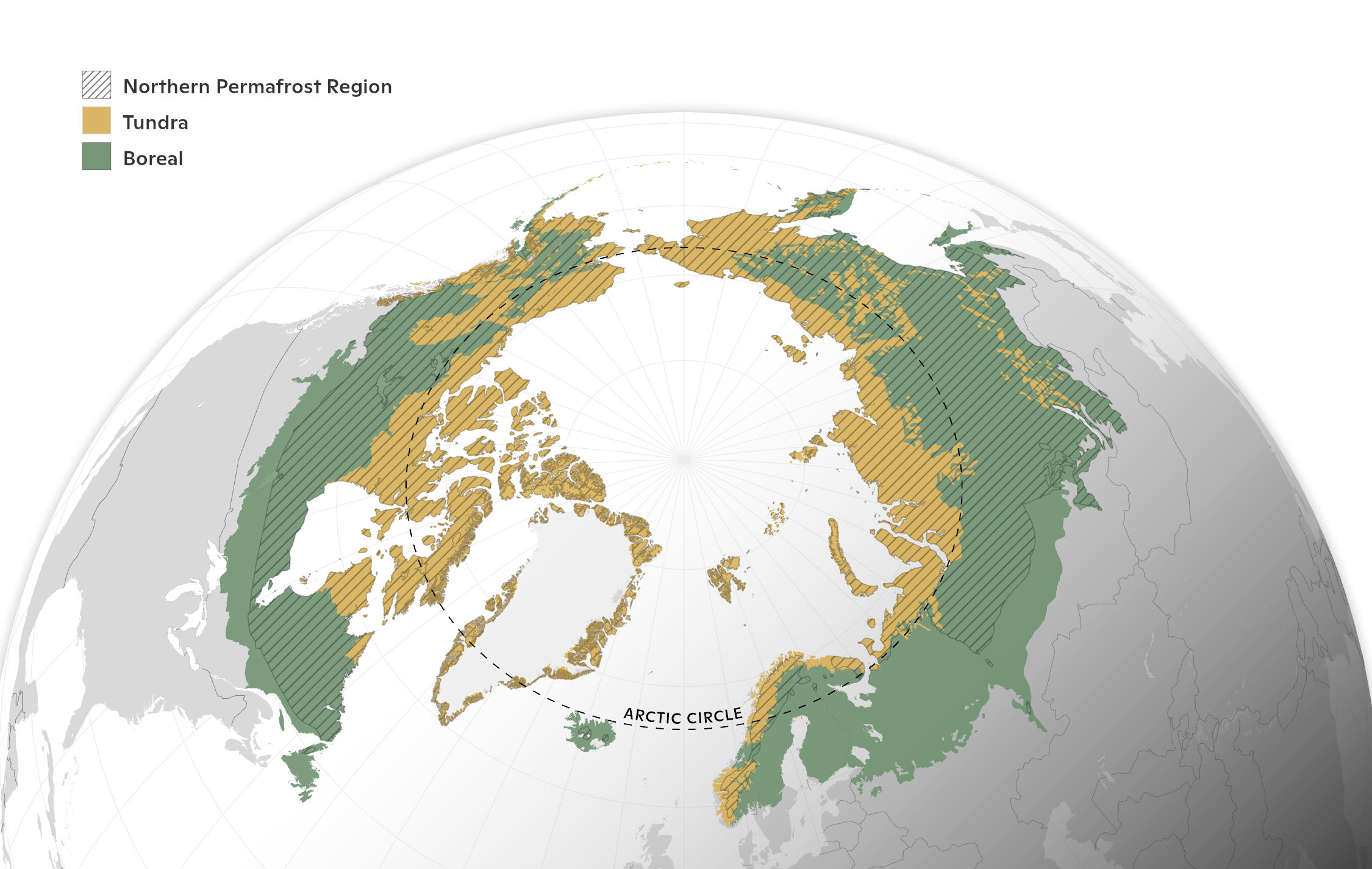
Tundra, boreal, and permafrost zones.
Map by Greg Fiske / Woodwell Climate Research Center
The latest findings add to a growing ensemble of recent studies that show how carbon budgets in the North are changing after the region’s historical role as a sink. While this study focused on CO₂ fluxes on land, other recent results that count CO₂ and methane (CH₄) emissions from lakes, rivers, and wetlands also found the permafrost region to be a carbon source.
But the recent cache of upscaling results tells similar stories: namely, that trendlines in the northern latitudes are beginning to turn, and a warmer, greener Arctic does not reliably translate to more carbon storage there—in part because warmer has meant emissions from permafrost thaw and greener, more carbon to combust.
For example, the Nature Climate Change study found that while 49% of the ABZ region experienced “greening”—in which longer growing seasons and more vegetation means that more carbon can be photosynthesized and stored—only 12% of those greening pixels on the map showed an annual increasing net uptake of CO₂.
“Carbon cycling in the permafrost region is really starting to change,” Virkkala said. “Our study may act as a warning sign of bigger changes ahead, and offers a map of places we’ll need to better monitor in the coming decades.”
This work was funded by the Gordon and Betty Moore Foundation and funding catalyzed through the TED Audacious Project for Permafrost Pathways: Connecting Science, People, and Policy for Arctic Justice and Global Climate.
Go to top

